12 Chicken Coop Ideas for Your Backyard Hens
These chicken coop ideas will help keep your flock safe and happy.
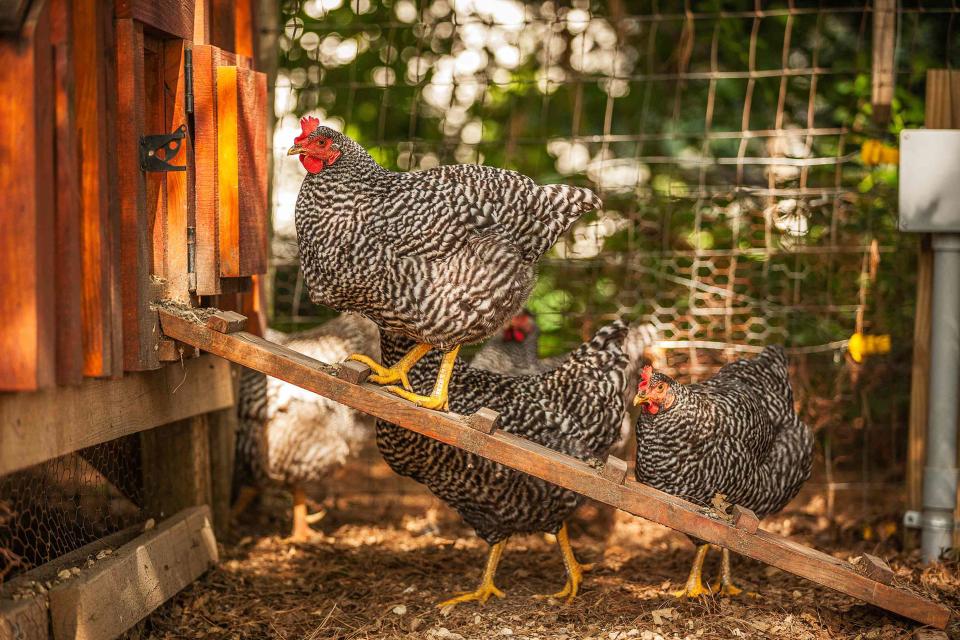
Bob Stefko
If you've been thinking about backyard chickens, there are several factors to consider. The main thing you'll need—aside from the hens themselves—is a chicken coop. I've had chickens for years, and during that time I've learned a lot.
My backyard flock started small, but quickly grew to accommodate more girls. I went from a small chicken tractor to a coop that is roomy and accessible, easy to clean, and comfortable for a flock of six hens. We sided our chicken coop with weathered barn wood, painted the door red, and hung a wreath on it—but there are unlimited options when it comes to size, style, and decor.
To help you get started, these chicken coop ideas include something for every backyard flock.
Related: Landscape Planning Tips From Start to Finish for a Perfect Yard
Include Nesting Boxes
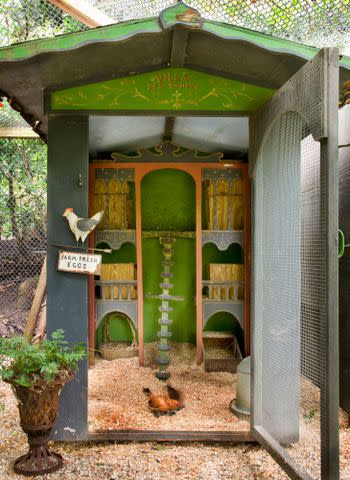
Ed Gohlich
Chickens need a secure, protected location—often in the form of small boxes inside the coop—to lay their eggs. But how do you know how many nesting boxes you need for your flock? The rule of thumb is one box per every 4 to 5 hens, and no fewer than two boxes in a coop, so that more than one hen can sit at a time. If you have too few boxes, a hen with a need to lay may squeeze into an occupied box. This often results in cracked eggs or eggs laid on the floor.
Decorative Touches
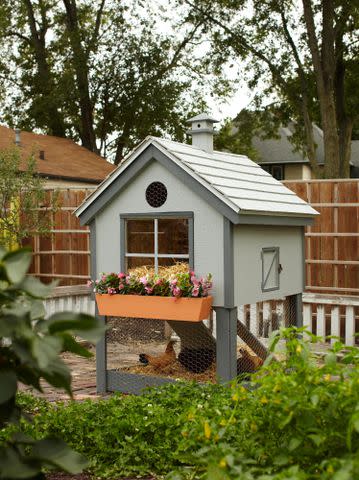
Cameron Sadeghpour
Looking for some chicken coop decor ideas to create a more aesthetically pleasing home for your birds? Try painting it to match your house or garden shed and adding a window box to provide seasonal color. Decorative touches, such as the cupola on the roof, add even more charm.
Elevated Chicken Coop
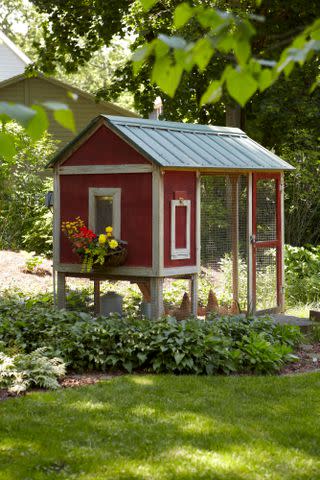
Karla Conrad
Raising the chicken coop off the ground provides a covered area beneath where your girls can go if they want to be outside, but need shade from the hot sun or protection from rain or snow. This is also a good place to keep their feeder so it is less likely to get wet.
Provide Secure Access
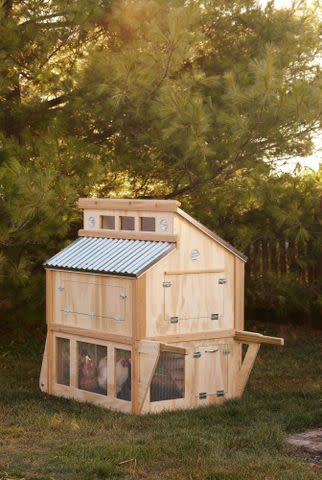
Marty Baldwin
Providing wide, easy-to-reach access for egg collecting and cleaning takes the stress out of those tasks. Keep the hinges clean and oiled, and be sure that these openings lock securely; racoons can be pretty crafty when it comes to getting inside a coop.
Use Fine Mesh for Chicken Coops
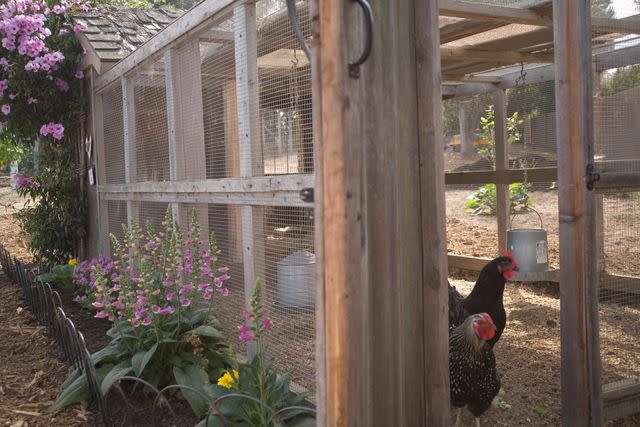
Edward Gohlich
Be sure to use a fine gauge mesh like this hardware cloth, especially in the lower two feet of the run. A larger gauge mesh, such as 1 or 2-inch chicken wire, allows your girls to stick their heads through it. This can be dangerous—I learned from experience that a stalking raccoon or hawk can pounce, decapitating the unsuspecting hen.
Large Chicken Coop Idea
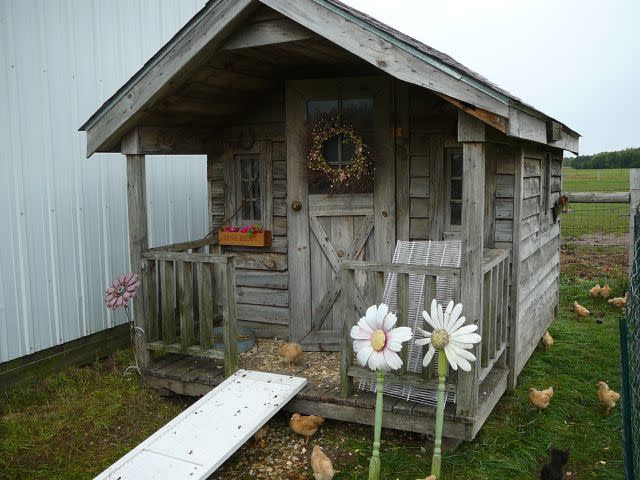
Dean Schoeppner
This rustic hen house is inviting to both the flock and their keeper. Designed to look like a little cabin, it’s large enough for a sizable flock. Surrounding it with fencing gives the chickens welcome access to the outdoors, too.
Tips
If you have the space, I've found that a larger coop is always better. That way your chickens will have plenty of room, and if you decide to increase your flock, you will have that option.
Add Places to Perch
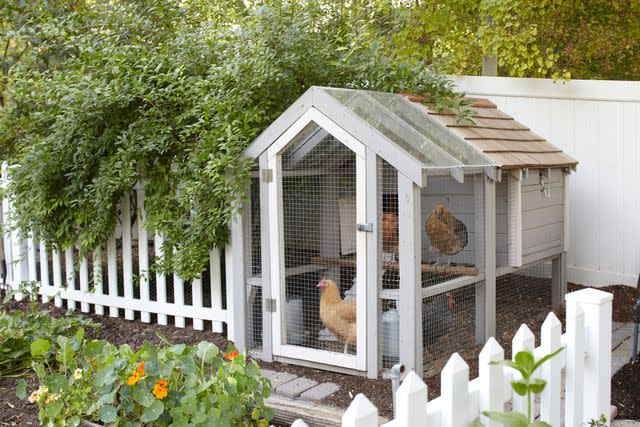
Kritsada Panichgul
Your hens need roosts—places to perch—both in the run and inside the hen house. It’s where they rest during the day and sleep at night. Several different roosts will provide options for your discerning hens. Anything with a secure spot for them to sit will work: An old wooden ladder or gate, a swing (these can be purchased, or you can construct your own), an old chair, a garden trellis, or a simple tree branch will all work well.
Consider a Chicken Tractor
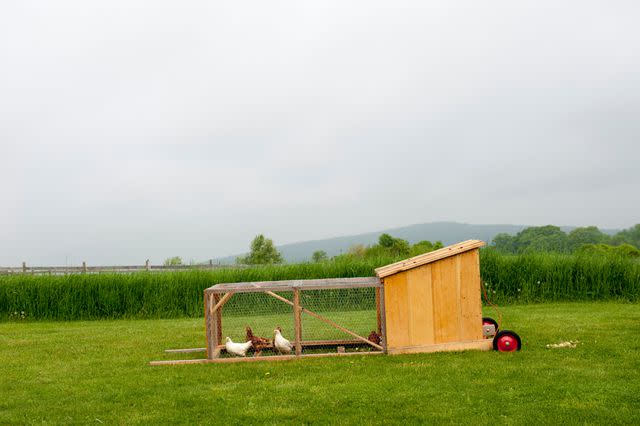
John Gruen
A coop with handles and wheels–often called a chicken tractor—allows you to change the location of the coop periodically. This gives your hens new territory to explore and they'll add free fertilizer to different areas of your landscape at the same time.
Build a Protected Run
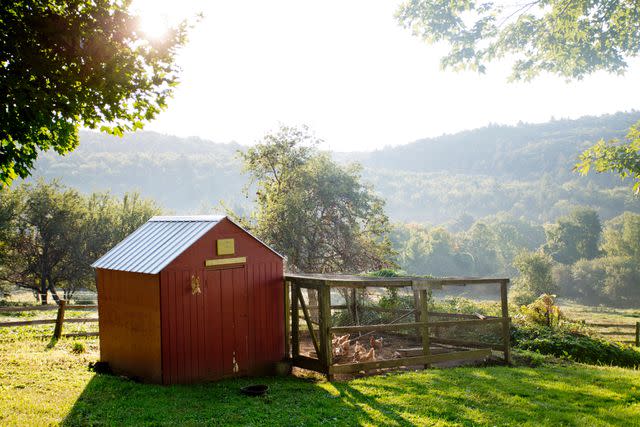
Rikki Snyder
Chickens like to explore, but hawks, owls, foxes, raccoons, bobcats, and other predators are potential dangers when your girls are outside. Keep them protected by giving your hens a large, securely covered run that allows them to wander a bit and keeps predators out.
Chicken Coop with Shade
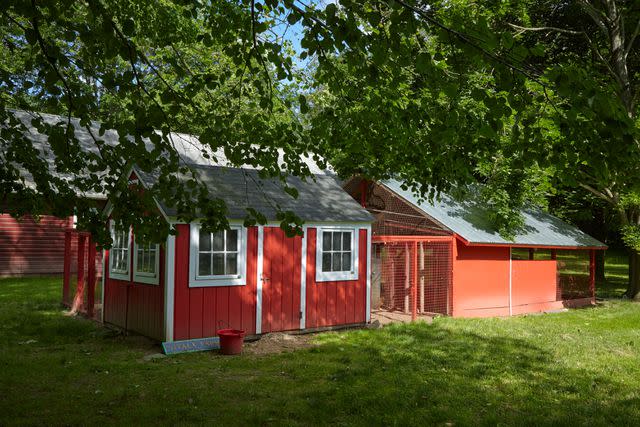
Tria Giovan
Chickens need shade to prevent them from becoming overheated, especially in the summer months during the hottest part of the day. Summer shade is more important to their health than heat in winter in most regions. Nearby trees may be all you need, and deciduous trees are perfect because they shade in summer but allow the sun’s light and warmth to penetrate in winter; just be sure they cast enough shade during the heat of the day. Consider a roof over the run if natural shade needs a boost.
Related: The 10 Best Shade Trees to Block the Sun and Beautify Your Yard
Landscape Your Chicken Coop
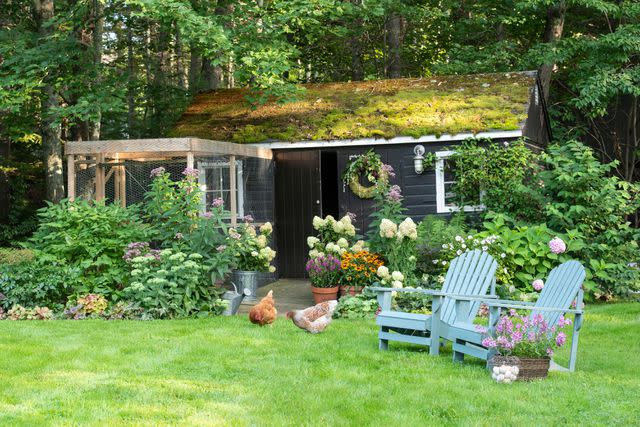
Kindra Clineff
Planting beds of mixed shrubs and perennials around your chicken coop makes it feel like part of your landscape. Add some containers of annuals for extra color and a couple comfortable chairs and you’ll have an inviting spot from which to enjoy your flock. The moss-covered roof is a nice touch—it helps insulate the hen house in both summer and winter.
Related: The 13 Best Outdoor Rocking Chairs of 2024 to Create the Coziest Porch
Free Range Chicken Coop
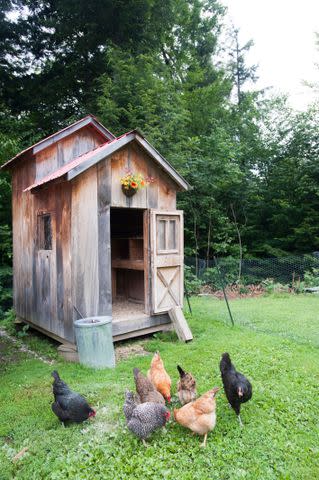
Kindra Clineff
Allowing your hens to roam the yard outside of their run keeps them happy and healthy, just as long as you’re nearby to prevent predators from attacking your trusting flock. Chickens love to forage. Whenever I dig a hole for a new plant, my girls run over to investigate what wormy treasures I exposed. And since they’ve learned to come when called, getting them back into their coop for the night is not a problem.
Chicken Coop Tips
As you think about what kind of chicken coop will work best for your yard and your hens, know that you might need to make adjustments as you go. My chickens seem to really like their coop, but they also like getting out of their run, even though it is generously-sized. (I only permit them to roam free when I'm around, so they don't become a meal for local predators.) Don't be afraid to change or add to your coop to meet the needs of your hens.
The most important lesson I've learned over the years is to train my chickens to come when called. This was actually pretty easy; shaking a tin can with a bit of their food and calling them got their attention. I rewarded them with the contents of the can when they got in the run. After a while I didn’t need the can—they would follow me anywhere. This can be helpful, especially if you create a free-range area, as you'll need a way to get them back into the coop to keep them safe.
For more Better Homes & Gardens news, make sure to sign up for our newsletter!
Read the original article on Better Homes & Gardens.

